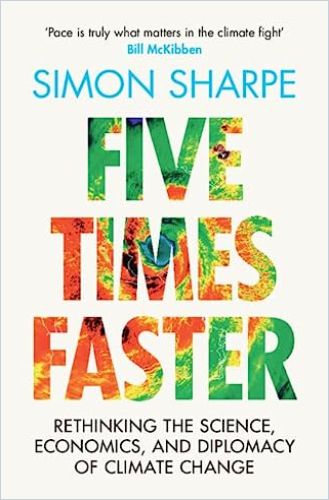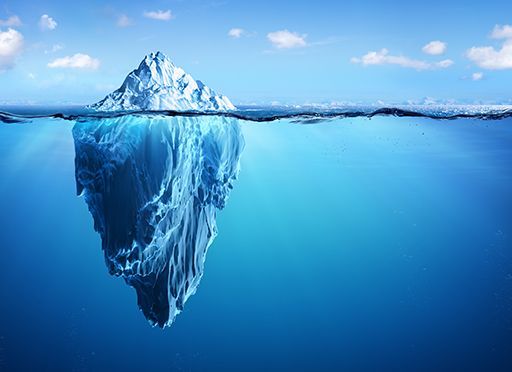Simon Sharpe, senior fellow at the World Resources Institute and Director of Economics for the UN Climate Champions Team, describes the current state of climate change thinking.

New Climate Change Thinking
Simon Sharpe, senior fellow at the World Resources Institute and Director of Economics for the UN Climate Champions Team, explains that to contain climate change, nations must make sure global temperatures do not increase beyond 1.5oC [2.7°F]. To that end, greenhouse gas emissions must drop dramatically and quickly.
Underestimating Climate Change
Even leaders who accept the science behind climate change – and whose countries emit dangerous greenhouse gasses in quantity – underestimate the risk climate change poses.
Since 1988, the Intergovernmental Panel on Climate Change (IPCC) has advised policymakers on climate science. Its 2013 report held that people at the time knew little about the worst-case scenarios and effects of climate change. It cited a lack of studies concerning the impacts on human health, crops or poverty levels if average global temperatures increased by 4°C [7.2°F] or more.
If we only look at the short-term future, we will be ignoring all the largest risks, and this breaks the first rule of risk assessment: Find out what is the worst that could happen.Simon Sharpe
The report maintained that if average warming went up 7°C [12.6°F] or beyond, portions of the world would warm beyond human tolerance, becoming unliveable.
While scientists seek scientific truths, policymakers need actionable data. Sharpe explains that creating the accurate, detailed risk assessments policymakers need will require the right research.
“Feedbacks, Tipping Points and Irreversibility”
A risk assessment begins with positing a worst-case scenario and then evaluating the likelihood that it could happen.
People whose internal temperatures rise increasingly above 37°C [98.6°F] can suffer grave or fatal injury. In 2014, temperatures that rose to 49°C [120°F] during a heat wave in Pakistan caused some 2,000 deaths. Rising average temperatures are substantially reducing wheat yields in Pakistan and rice yields in China.
Climate change is different. Its risks are sure to keep on increasing until we completely stop emitting greenhouse gases. Simon Sharpe
Feedback loops amplify and accelerate climate change, which is a kind of feedback loop itself. For example, warming air melts arctic sea ice. The resulting seawater reflects less sunlight back into the atmosphere than the ice used to reflect, and the atmosphere warms. Tipping points occur when temperatures rise sufficiently to cause fundamental changes in the dynamic relationships among an ecosystem’s interdependent elements. Irreversibility – a likely product of climate change – defines the point when humankind cannot return the Earth to its previous balance if it doesn’t reverse the changes, such as sea rise, spurred by the warming climate.
Economics of Climate Change.
A cost-benefit analysis of climate change would involve both its science and the policy question of what to do about it. Climate change and the response to it both will be expensive, with one proportionate to the other.
Some worthwhile solutions to climate change cost less than the damage climate change causes. Economics cannot assign values to rampant species extinction, crop failure or loss of human life without being arbitrary – just as no one can precisely quantify the future costs of the “zero-emissions industry.”
Economics involves allocating a finite number of resources and the less predictable wealth creation. Economies exist over time and remain in flux. The economy is a “complex adaptive system” in which participants must adjust to changing circumstances.
However, climate change demands that people transform the nature of the economy and change the way they live – all without advance knowledge of the consequences of their policies and actions. The concept of an economic ecosystem is the only way policymakers, scientists, governments and citizens can address climate change effectively.
System Change
Classical “equilibrium economics” regards climate change as a market failure. In this view, climate change resulting from excessive, prolonged emission of greenhouse gases is an “externality” that benefits individuals while damaging society as a whole. The equilibrium economics solution is to draw this externality into the market economy through leveraging a carbon tax and financing further research into technologies that mitigate greenhouse gas emissions. Such measures seek to align market forces and the public good.
This “do the minimum” approach has had a powerful impact on policymakers. But the high risks that climate change poses demand a “do the maximum” approach – basically, do everything possible.
Climate change negotiations typically seek to divide global greenhouse gas emission-reduction targets among participating countries. But scientists, policymakers, researchers and governments have not found an effective general formula. Individual countries did set emission goals for the first climate change agreement, the 1997 Kyoto Protocol. But the Protocol offered no incentives to comply and no penalties for failing to do so.
Experts who study trends in emissions and low-carbon technologies typically say, ‘We are making progress, but nowhere near fast enough’.Simon Sharpe
For a climate change agreement to be functional, it must break down more complex problems into separate parts. The number of parties participating in an agreement must be manageable, and the time period must be realistic. The more people who participate, the more difficult consensus becomes.
Many nations signed the 2015 Paris Agreement on climate change, and citizens, governments and scientists hailed it as a triumph. Signatories committed to the goal of limiting average global temperature rise to 1.5°C above preindustrial levels. They agreed to set individual national emissions goals and to update those goals every five years.
To achieve this climate change goal, society must enact rapid, radical change on a vast scale.
A Peek Into the Abyss
Simon Sharpe offers a sobering, clear overview of the practical, economic, and scientific issues facing nations attempting to slow the Earth’s rising temperatures and climate change. He’s no ideologue, and he backs every assertion with science, which could slow readers who are trying to find the core of his book. But Sharpe writes well and clearly – unlike a scientist seeking to conceal his findings. He wants to share knowledge and raise an alarm without sounding like an alarmist. However, thankfully, Sharpe is an alarmist, however quietly. He’s peering over the abyss for everyone, and he asserts convincingly that to avoid the worst impacts of climate change, human thoughts and actions – and the world’s economies – must change.





